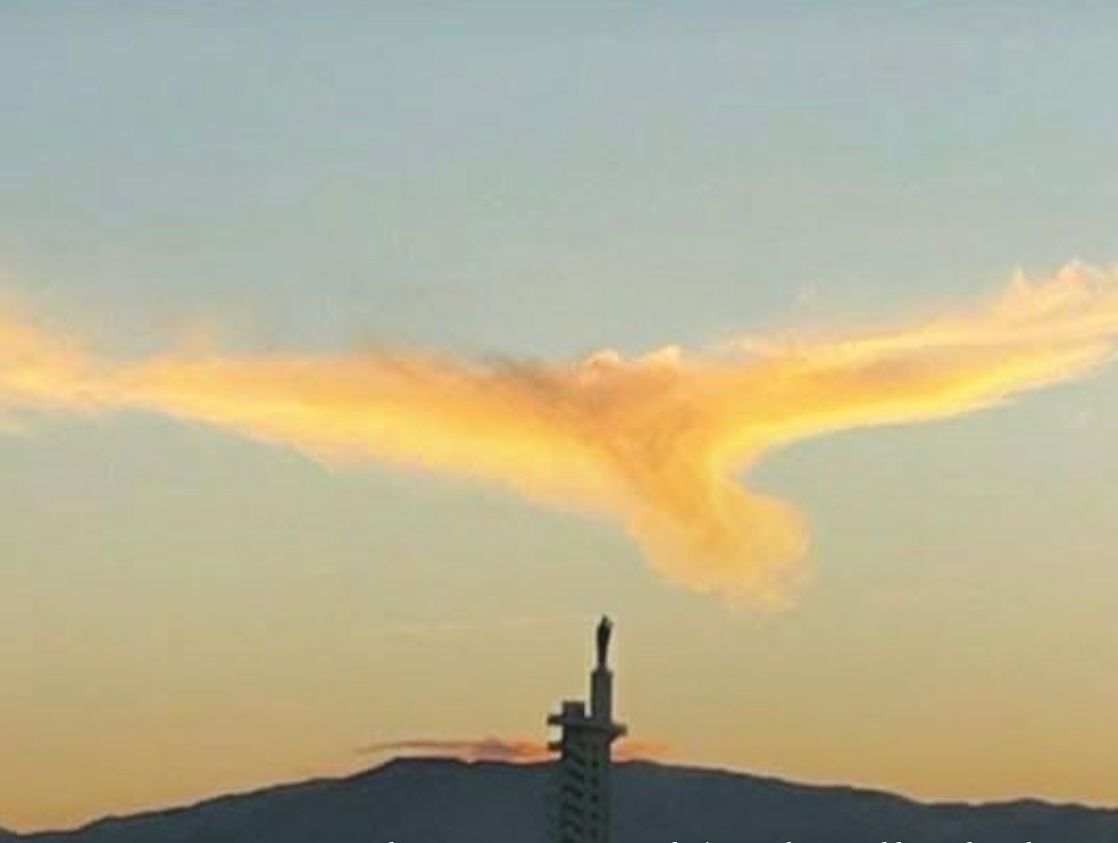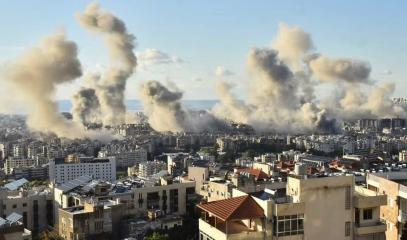Cease fire: ruins reveal cost of Hezbollah's ‘victory’
While the ceasefire with Israel is holding tenuously, reports emerge from the areas hardest hit by the war. The agreement came on the day of a Marian feast, just as it did in 2006. The damage caused by the heavy bombardment in the last hours before the truce came into effect. A nun from Nabatyeh: ‘The entire city is dead, our school will not be able to reopen until February’.
Beirut (AsiaNews) - ‘They feel victorious, because their spirit has not broken. At the border they fought like lions’. This is how Habib N. (*) assistant professor at Beirut's Saint-Joseph University, comments on the incredible festival of yellow Hezbollah flags that flew on all television screens on 27 November, the morning the ceasefire between Israel and Hezbollah came into effect. ‘A victory, but at what price,’ he adds.
‘It's the feast of Our Lady of the Miraculous Medal,’ observed an early morning WhatsApp message from a journalist friend. ‘It's a beautiful sign! It is not a coincidence.’
Do we owe the ceasefire to prayer? Perhaps. Why not? In many parishes, incessant appeals were made for the Israeli air force to stop its deadly aerial ballet. A few hours later, a photo circulating on mobile phones showed a dove-like cloud formation above Notre-Dame du Tell, in Zahlé, where half of the Shiite Bekaa had taken refuge. Another ‘beautiful sign’. ‘The 2006 war actually ended on the feast of the Assumption, 15 August,’ recalls a consecrated laywoman from the diocese of Antelias.
Filmed a few minutes after the ceasefire came into effect by the early risers of al Manar, Hezbollah's television station, the cars speed along the southern highway. It is a fascinating sight at first light. Hearts are light, but in a few hours traffic jams of several kilometres will form, and Israeli warning shots and army roadblocks, which are beginning to deploy, will prevent villagers where Israeli troops are still stationed from returning to the familiar smells of their homes. AnAssociated Press photographer was injured in the leg after getting too close to a tank. ‘Have we fallen into a trap? Do they want to occupy the destroyed border strip?’
In the southern suburbs of Beirut, to the crackle of automatic weapons, cars move slowly through a sea of motorbikes and rubble-covered streets. The real inhabitants stand out from the young agitators in black shirts of the pro-Iranian party. There are even distributions of yellow flags and pastries. Desolation is everywhere, but the news of the cease-fire eases all pain. Two men can be seen hugging each other and crying, as if after a long absence, while others have their pictures taken on the rubble of destroyed buildings.
The last day of the war had been terrible. Twenty attacks in 120 seconds. The air force hit Hezbollah bank branches in particular. ‘I saw my car burning on television,’ one man commented into a channel microphone. ‘I shook like a leaf for two hours at the roar of the attacks,’ Asma F (*), a university teacher who lives in Hazmiyé, a neighbourhood overlooking the suburbs, tells me over the phone. ‘I didn't sleep all night,’ she adds.
Following the advice of Avichay Adraee, the Arab spokesman (with a Hebrew accent) for the Israeli army, many Beirut residents disoriented by the Israeli air raids have slept in their cars parked in ‘safe places’, in Beirut's Christian neighbourhoods or in Martyrs' Square in the city centre.
The return is massive and impressive, in all regions targeted by the Israeli air force. The huge craters left by shells on the road separating the Lebanese and Syrian border crossings are being filled by trucks loaded with large blocks of stone from the quarries of the Anti-Lebanon mountain range, under the watchful eye of the Minister of Public Works and Transport, Ali Hamiyé, to allow displaced Syrian refugees to return to the battered Bekaa.
In Tyre, Israeli raids have rendered some neighbourhoods uninhabitable. Ruined buildings can still be seen smoking. ‘There is no more water or electricity, even private generators no longer work, the cables have been cut,’ complains the owner of a “rest home” on the beach in Tyre. Several buildings on the seaside corniche, the jewel of the city, have been torn apart.
‘There are no military targets here. We wanted to hurt Nabih Berry. It is pure wickedness,' complains the owner of an Oriental bakery, his voice muffled by the roar of the bulldozers. The mayor of Tyre, Hassan Dbouq, told AFP that ‘more than 50 buildings between three and 12 storeys high were completely destroyed by Israeli attacks’ and dozens of others were damaged by up to 60 per cent.
The same thing has happened almost everywhere. In Nabatyeh, the Antonine Sisters' school, which accommodates 1,800 pupils from kindergarten to senior year, was severely damaged. ‘There is no water, no electricity, no internet,’ laments Sister Marie Touma, headmistress of the school. The whole town is dead. The children's building was badly damaged by the explosions. Some pillars were damaged and the walls were ripped open. The door and window frames of the school were all blown away. ‘It will take two weeks just to repair the windows. I don't think the school will be able to reopen before February.’
The attacks continued until an hour before the ceasefire came into effect on Wednesday. The latest raid targeted the neighbourhood where Anas Mdallali, a Syrian tailor who has lived in Tyre for ten years, lives. ‘I cried with rage,’ says the 40-year-old, looking at the piles of rubble blocking the entrance to his building. ‘Since yesterday I have been taking medication after the shock, I look at the destruction and my children's toys and I cry.’ The country is still in shock.
(*) Names have been changed to protect anonymity








.png)










